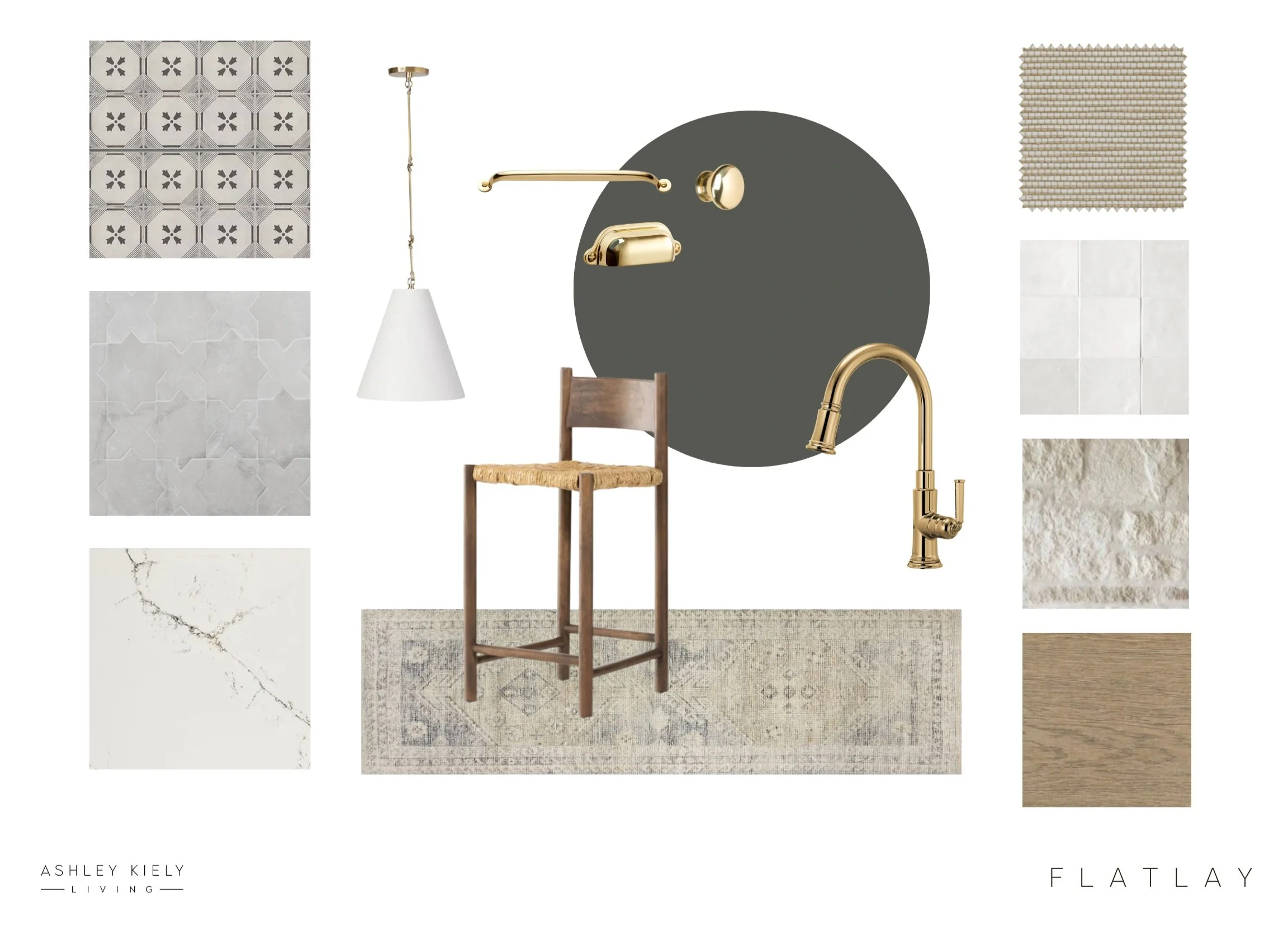Design Mood boards 101
Let’s start with the basics: What’s a mood board and why is it important to the design process? The short answer: It’s a visual representation of your project – the vibe, the products, the finishes, the style. There are SO many ways that any one project can go, so by creating a mood board, you’re really creating a map to your project that will guide your purchase decisions.
The first step in creating a design mood board is to brainstorm and we love Pinterest for this. All you have to do is enter a few keywords into their search, like “girls bathroom remodel” or “kitchen renovation” or “entryway ideas”, to get inspiration on hardware, lighting, paint colors, products, and beyond. See something you like? Pin it to your project board.
You’ll start to notice a theme to what you’re drawn to…maybe a color palette emerges or a design style (i.e mid-century, coastal, farmhouse, or modern to name a few). Maybe a piece of art inspires the design direction. Or maybe you find a rug that you want to design the whole room around. Keep in mind that you’re using Pinterest to create a big-picture guide to your project. That custom-upholstered, artisan-crafted, mid-century sofa you find may not be in your budget, but it can absolutely be a visual representation of the look you’re going for. And if we’ve learned one thing, there’s always a budget-friendly version out there somewhere.
Using what you’ve found on Pinterest, you can create your mood board in Canva. The free version is totally fine for this. Have a little fun with the process. Not all the photos have to be design related, either. A clip of perfect peonies could represent the color you love. Or a potholder. Or a sweater. Canva has tons of ready-to-go templates that you can make your own by choosing different fonts, text colors, etc.
Now that you’ve got your visual direction down, it’s time to start shopping around and sourcing all the things. Make a list of every item you think you’ll need for the project – furniture, fixtures, paint, cabinet pulls, bedding, rugs, etc. There will always be another item that pops up during the process, but that’s okay. Go with what you know right now.
A quick Internet search of a specific piece you are looking for will often give you a ton of different options, like “mohair sofa” or “Persian rug”. Create a new design board in Canva to simply drag and drop images. Crop as needed and remove the background (Canva Pro has a fancy tool for that). The more you add to your design board, the more you’ll see your space come together. It really helps you visualize things before making that final commitment.
It’s also a really good idea to order samples of everything you can before you make your final decision – tile, paint, flooring, wallpaper, finishes, and textiles. The AKL design team uses these samples to create what’s called a “flatlay”. It’s a great way to see in real life how all the materials come together because ninety-five percent of the time a material looks completely different in person than it did online. So by ordering samples, you’re saving yourself time and money.
Creating your mood board should be fun, so let go of the need for perfection and open yourself up to possibility. Interested in a little more insight on creating mood boards? Watch this video which might help.



